Last Thursday, July 10th, 2025, brought a warm afternoon that perfectly matched the thoughtful mood of our special visitors. A group of 36 architecture students accompanied by 2 faculty members from Thiagarajar College of Engineering (TCE), Madurai, arrived at Organo Antharam, their curious faces lighting up as they stepped into our rurban community for what would prove to be an enlightening case study visit.
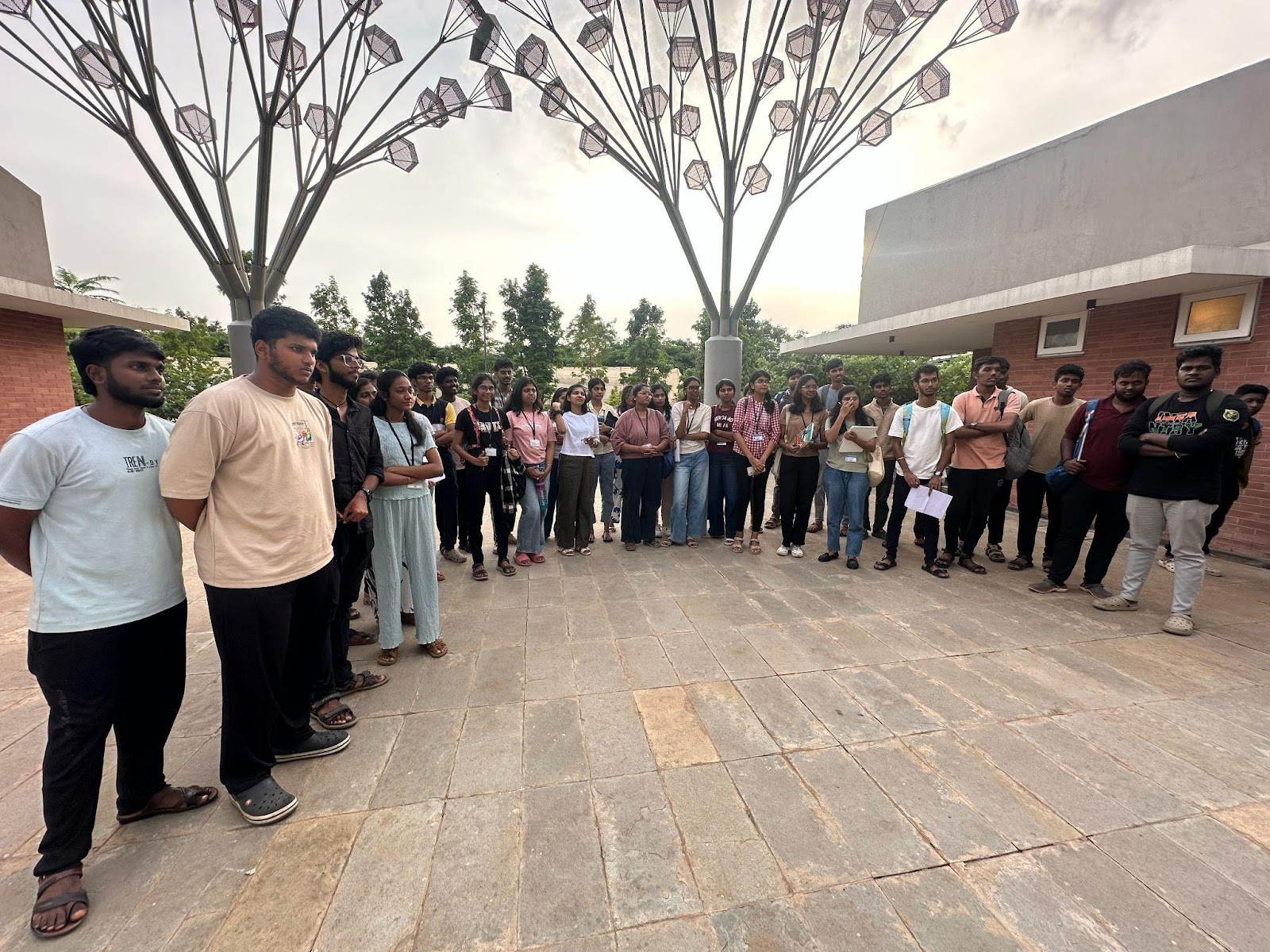
Mr. Prabhakara Rao, Associate Product Guide at Organo, and Sushmita Changkakoty, Assistant Programme Co-ordinator, warmly welcomed the students before guiding them into our sustainable community. What made this visit particularly engaging was how we organised the experience around Organo's core philosophy.
Just as Organo's projects are designed around the principles of SAPTHAPATHA, we divided the students into seven groups representing the seven strands of sustainability: Energy, Air, Shelter, Food, Earth, Water, and People. This structure allowed each group to delve deeply into their specific area while understanding how all elements interconnect to create a holistic, sustainable community.
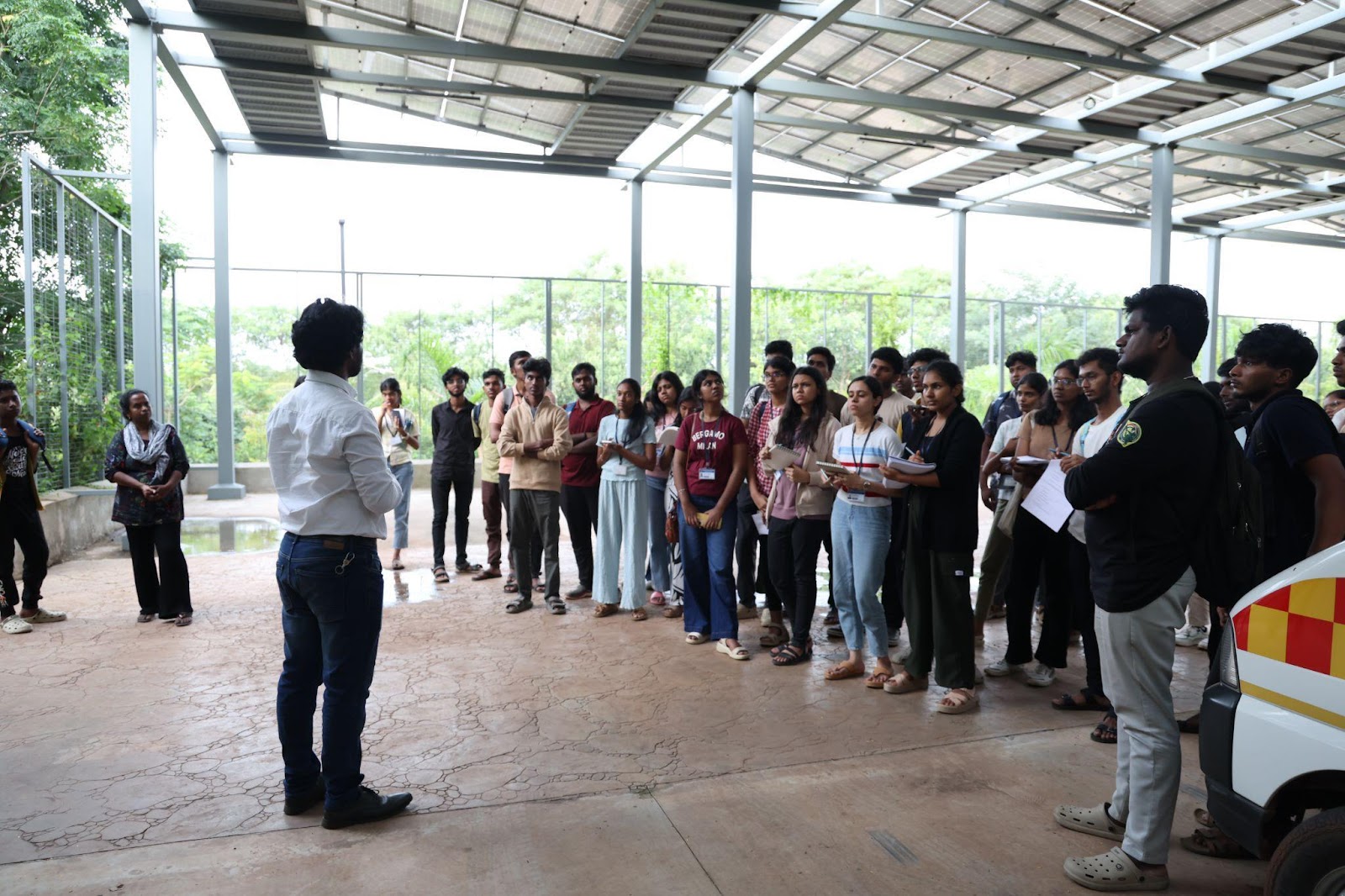
The tour kicked off at Antharam's decentralised parking areas, where students immediately encountered their first lesson in renewable energy integration. The solar panels installed on the parking roof spaces sparked discussions about energy generation and distribution throughout the community.
What captured their attention was learning about the practical challenges of solar energy management. Mr. Prabhakara explained how kilowatt production varies with changing weather conditions and demonstrated the sophisticated grid management system that ensures a stable, reliable energy supply despite these natural fluctuations.
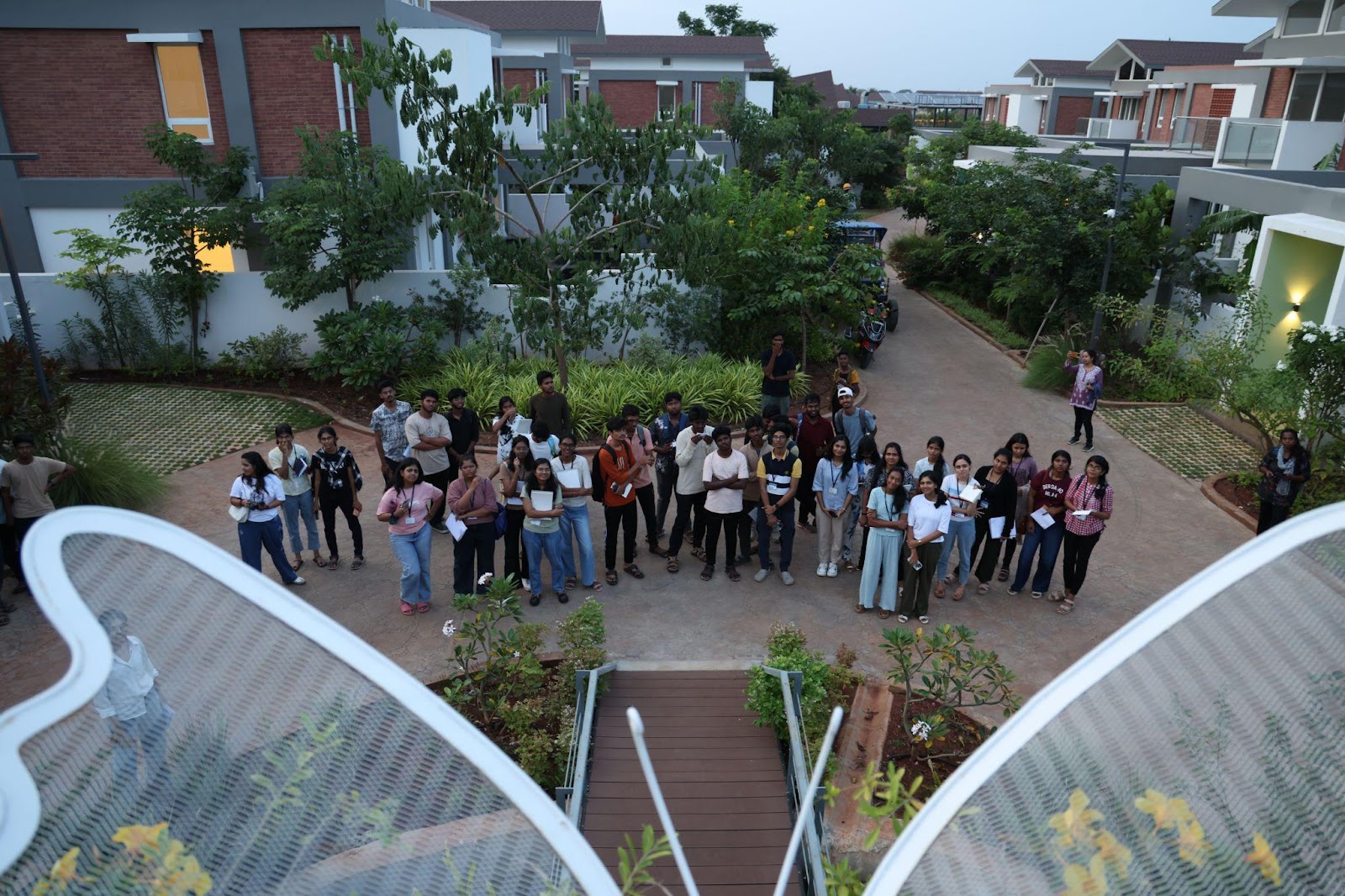
Moving into the cluster homes, the students encountered Antharam's thoughtful staggered housing design. The curved roads that define our layout are strategically designed to enhance natural lighting and ventilation in every home. Mr. Prabhakara walked them through the wind flow analysis that informed the community's design, showing how architecture can work with nature rather than against it. Furthermore, they were familiarised with bio fencing, which not only serves as a habitat for the fauna but also acts as an effective windbreak, providing dust control and preventing moisture loss.
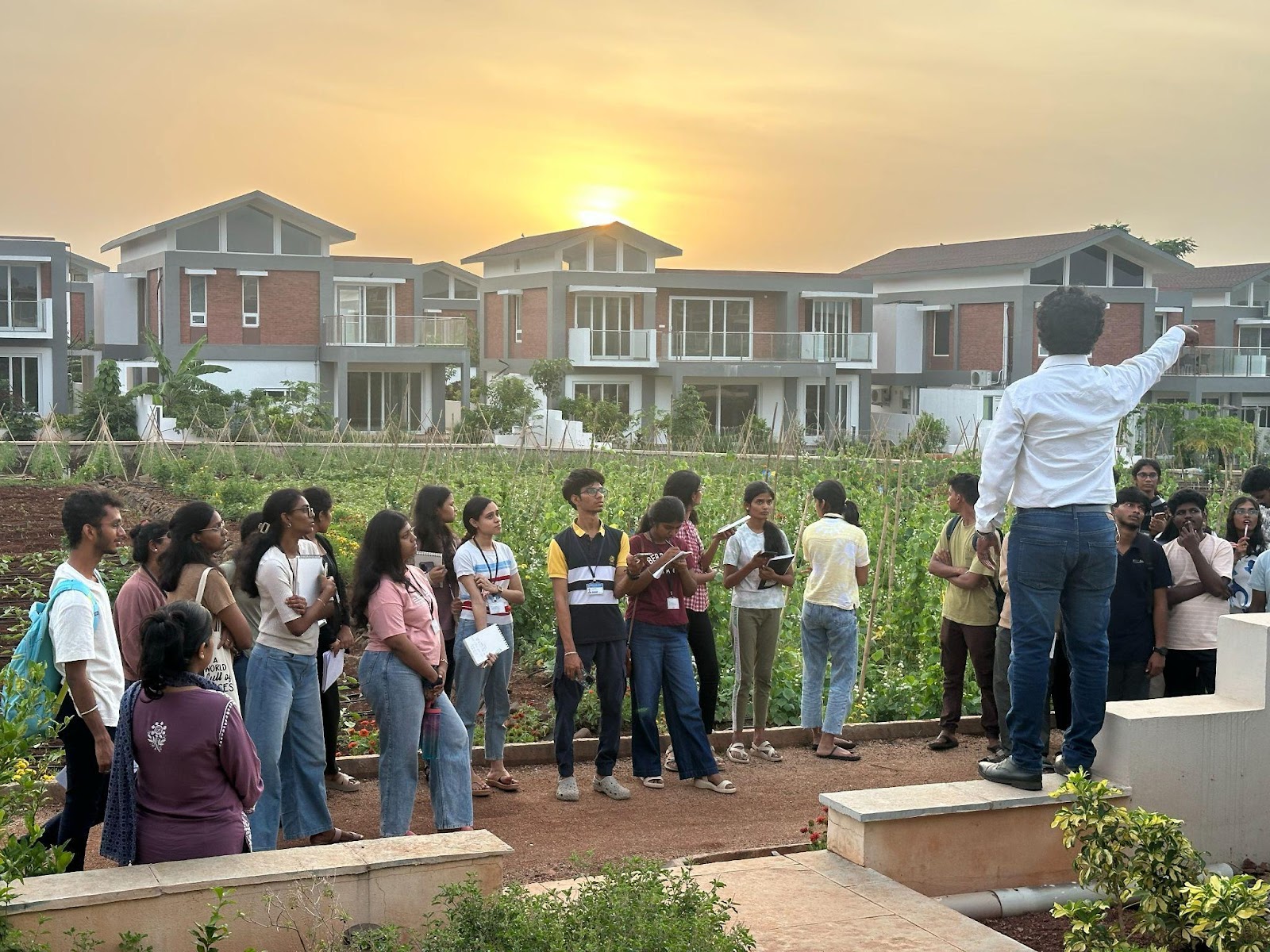
The cluster clubs became another fascinating discovery. Students observed how different clusters feature different clubs, each fostering unique types of community interaction. This concept of "placemaking" through purposeful design resonated strongly with the future architects, who could see how built environments directly influence social dynamics.
They also learned about passive cooling techniques integrated into the buildings—strategic orientations, hard-tampered glass for optimal natural lighting, and the careful selection of energy-efficient building materials.
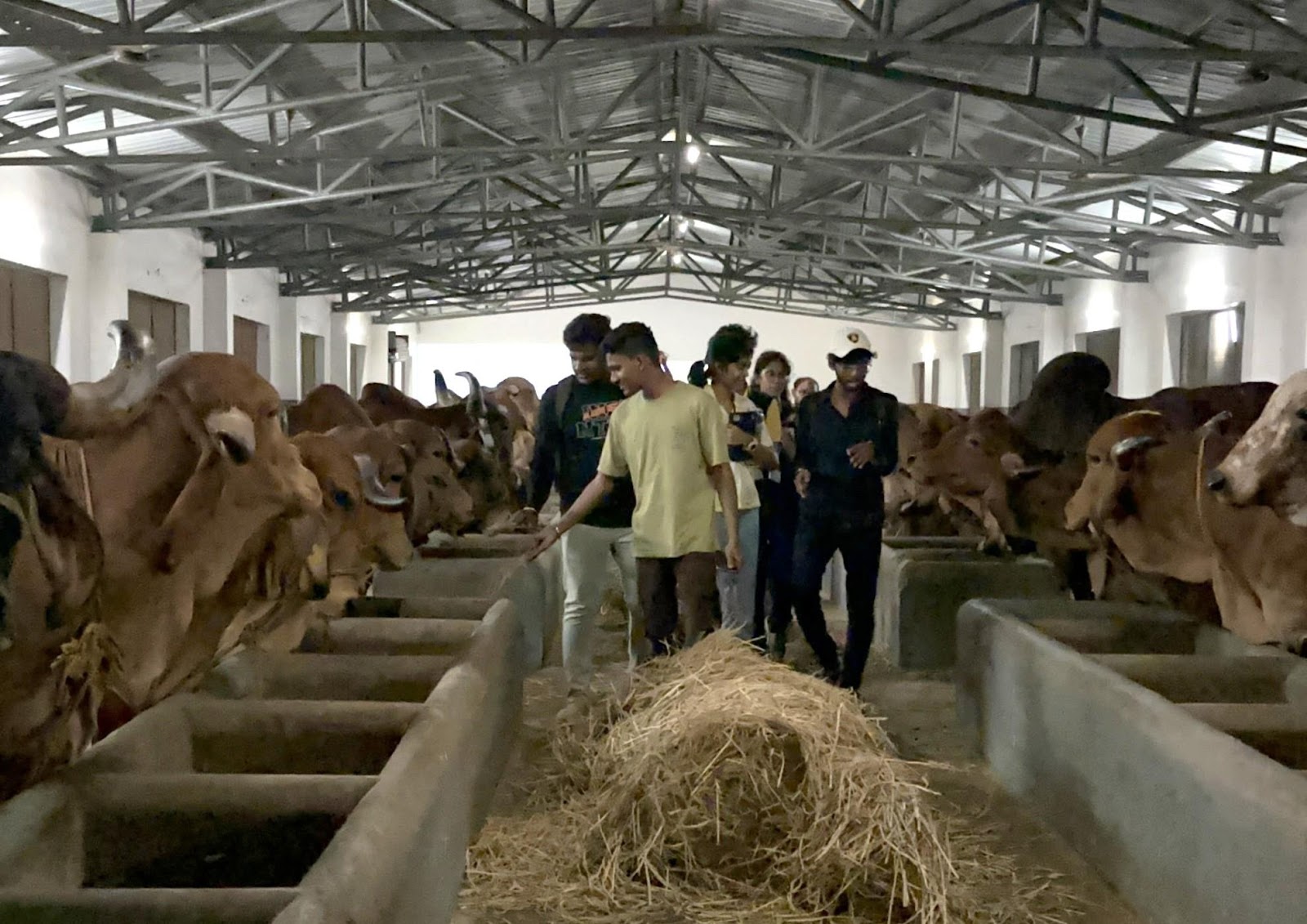
Further, the students greeted the cows of "Organo Goshala", which refers to the cow shelter (Goshalas), which are designed to promote sustainable and healthy living practices. These Goshalas house desi cows, providing fresh, natural milk for the community, and their byproducts are utilised in various ways, including biogas production and natural fertilizer and pesticide creation.
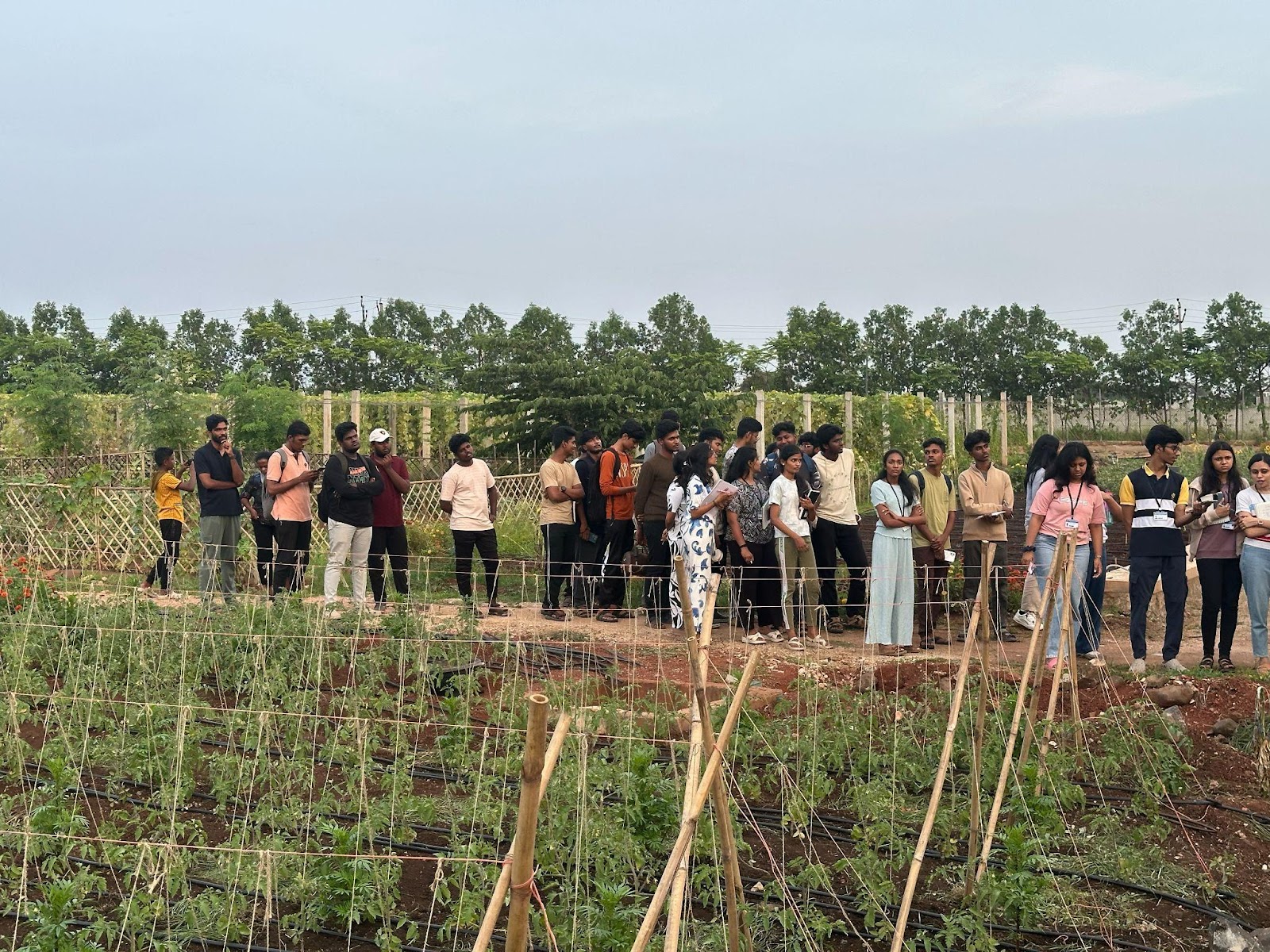
The farmland tour revealed to the students how cluster homes are strategically positioned to face the agricultural areas, creating a visual and practical connection between residents and their food sources.
At Organo, we have established traditional agricultural methods combined with modern eco-friendly practices. As part of our practice, we avoid the use of chemical fertilizers and pesticides, focusing instead on natural composting, crop rotation, and intercropping to enrich the soil and protect biodiversity. The produce is also supplied to the community kitchen at Organo Antharam, which ensures cooked food also has local seasonal produce from the farm.
What struck them most was understanding how community interaction flourishes through active participation in farming. This shared agricultural system doesn't just provide fresh produce but creates bonds between neighbors and contributes to genuine self-sufficiency.
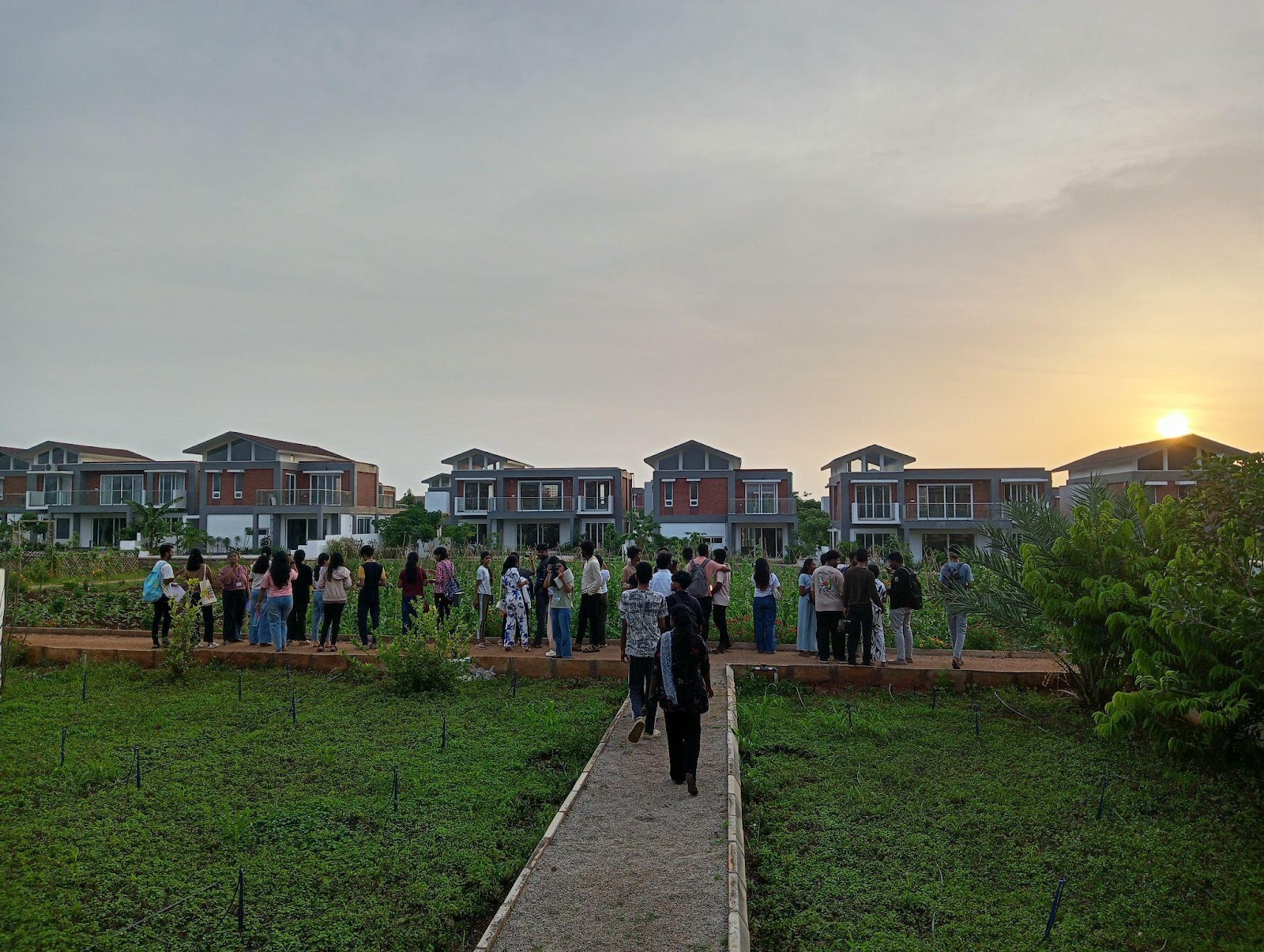
The pathways leading to the forest offered students insights into ecosystem management and conservation. They gained insights about natural farming techniques such as use of native seeds, jeevamrutham- a plant biofertiliser, mulching, and diverse cropping systems.
For instance, they learned about the natural role of dried leaves as mulch. This simple process helps retain soil moisture while providing habitat for various species, creating a thriving ecosystem within the community. It was a beautiful demonstration of how working with natural processes can be more effective than fighting against them.
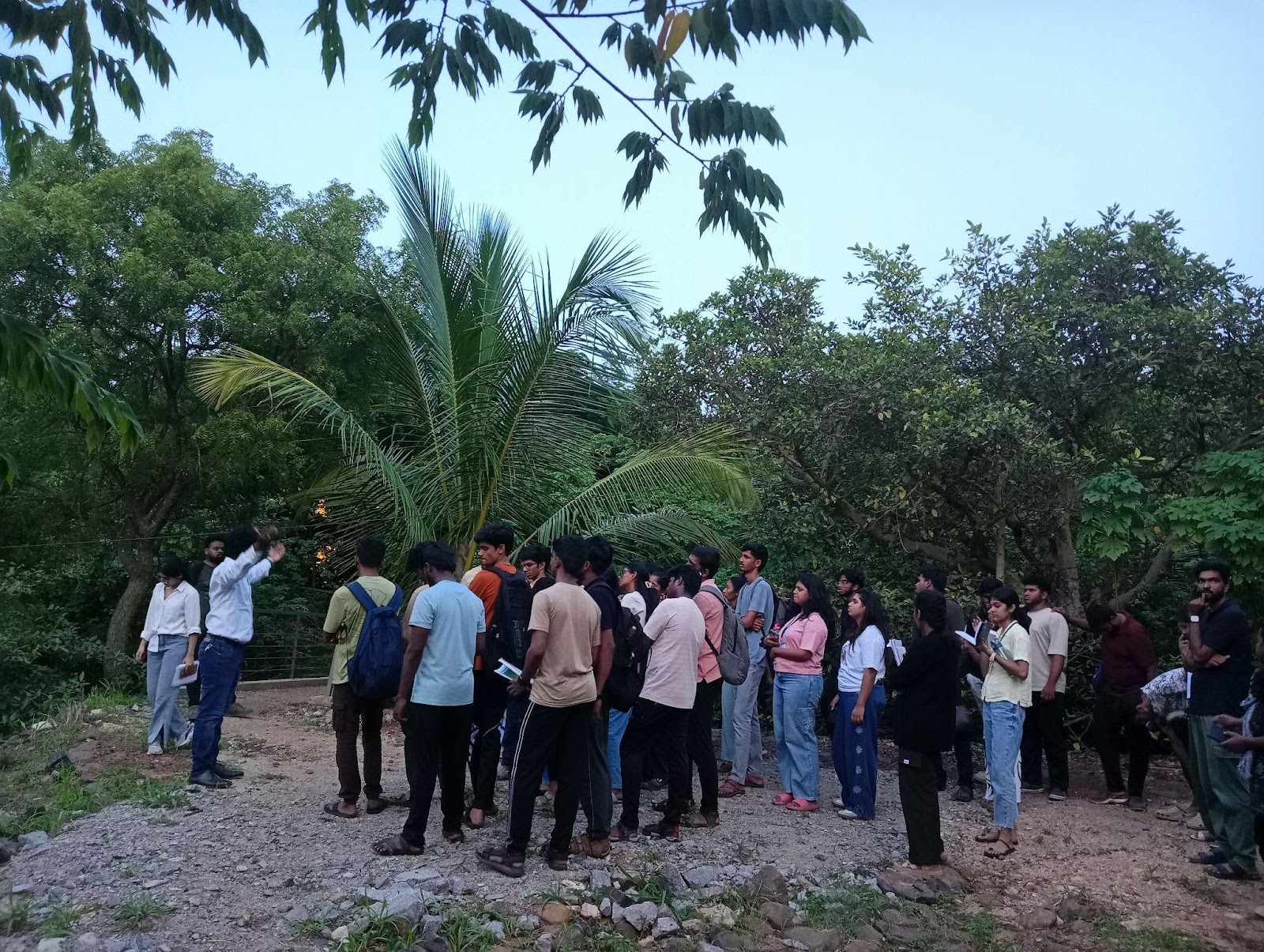
The tour's exploration of water systems revealed Antharam's comprehensive approach to this precious resource. Here, the students encountered the drip irrigation system that efficiently conserves water for plants. They examined the rainwater collection system, which efficiently gathers and stores water in a dug well, ensuring the community's self-sufficiency even during dry periods.
What particularly impressed the students was learning about greywater recycling. This ingenious system reduces waste while conserving water resources, demonstrating how every drop can serve multiple purposes when thoughtfully managed.
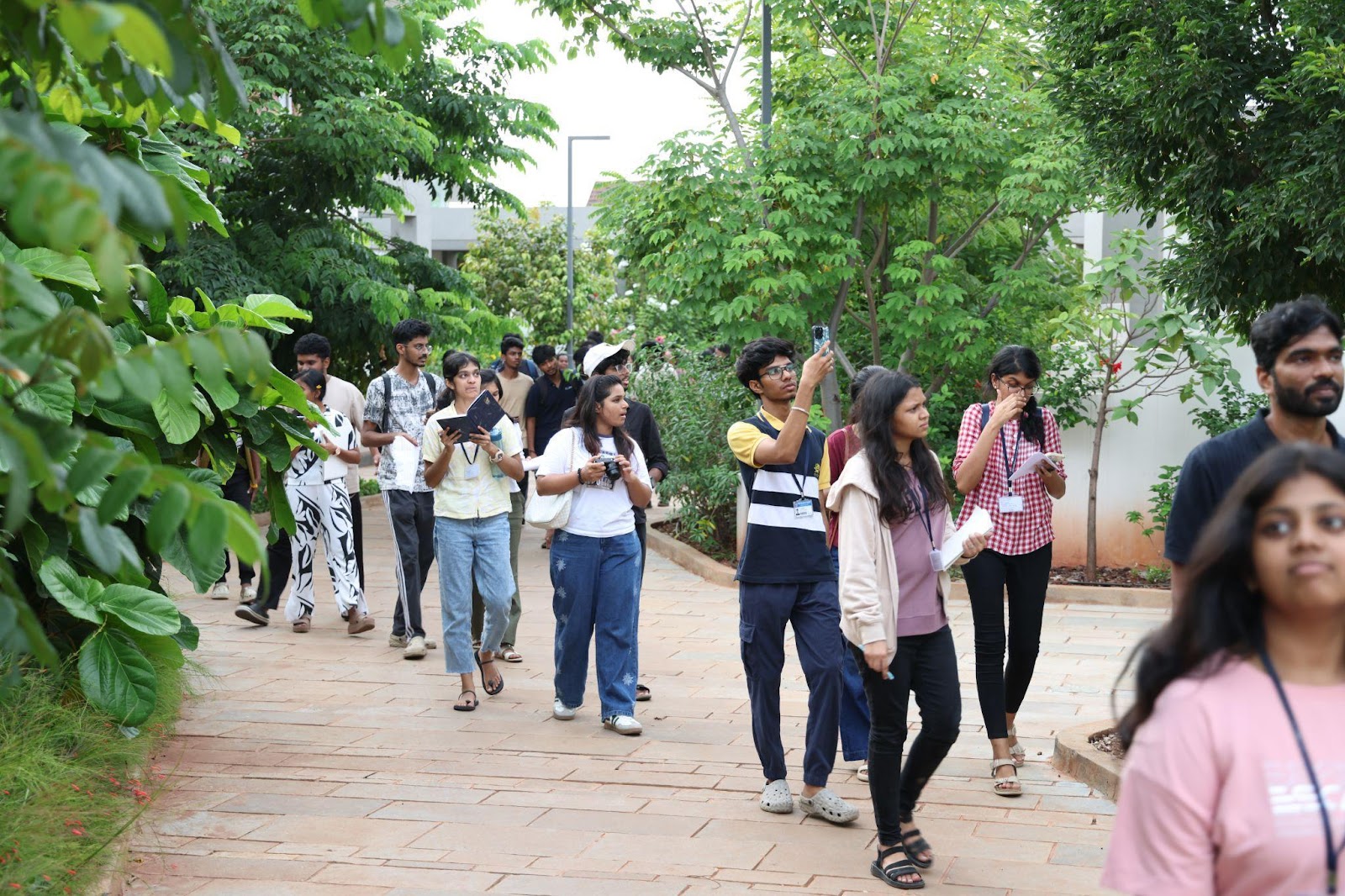
The group's visit to the House of Activities showcased how sustainability extends beyond basic needs to encompass wellness and recreation. Here, students explored the creation of a bio pool—a natural water filtration system that maintains clean water without harsh chemicals.
The facility's various fitness and recreational amenities, including the gym and indoor badminton court, reinforced an important principle that sustainable living doesn't mean sacrificing quality of life. Instead, it means creating well-rounded spaces that nurture both physical health and community connection.
Further, at God's Own Office, students could see the master plan come to life. They explored the unique architectural design that seamlessly integrates coworking spaces, a therapeutic spa, kitchen facilities, and water bodies, including bio-pools.
The students also learnt how residents from nearby villages play an active role in shaping the Organo Antharam community. Local villagers are employed in diverse roles ranging from chefs and electricians to supervisors and security personnel, ensuring the community is both well-managed and deeply rooted in its surroundings. This collaboration highlights how rural and urban areas can not only co-exist but complement each other, combining rural wisdom with urban innovation. The outcome is a built environment that is both environmentally responsible and beautifully functional.
Organo Antharam perfectly encapsulates the “rurban” concept”, seamlessly blending urban amenities with rural living to create sustainable, eco-friendly communities.
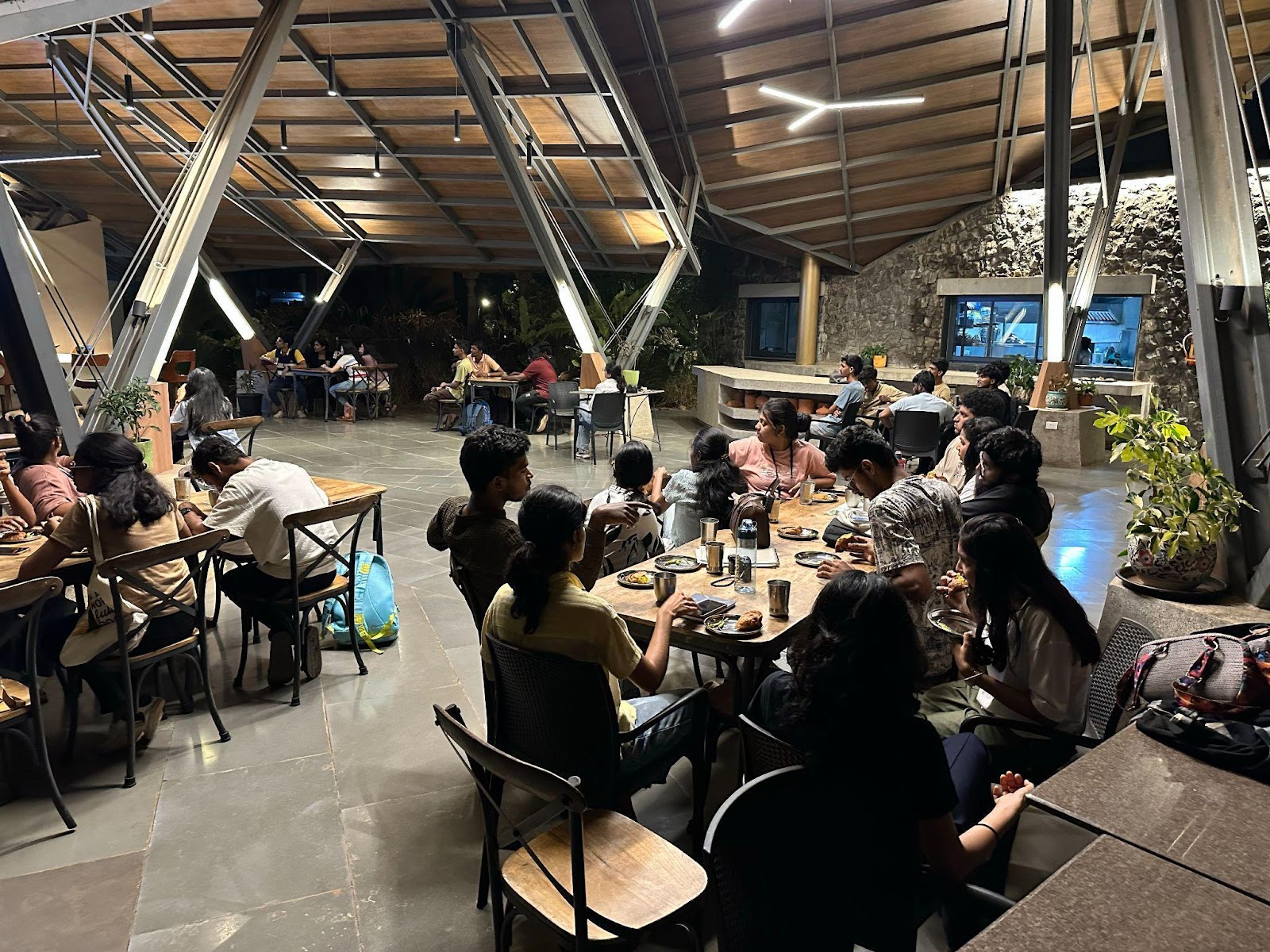
The students' final stop was the Rurban Hive, a community gathering space, where they encountered time-tested building techniques adapted for contemporary living. The mud-plastered walls, evaporative cooling systems, and natural insulation materials showcased how traditional knowledge can inform modern sustainable architecture.
As the visit drew to a close, students were treated to comprehensive documentary videos that tied together everything they'd experienced throughout the day. These films provided a broader context for Organo's vision and methodology, helping students understand how individual sustainable practices connect to create thriving communities.
The day concluded with meaningful conversations about eco-living and Organo Et School—an initiative dedicated to promoting sustainability, collective farming, and ecological living practices. Students engaged with questions about implementation, challenges, and the future of sustainable design, their minds buzzing with possibilities.
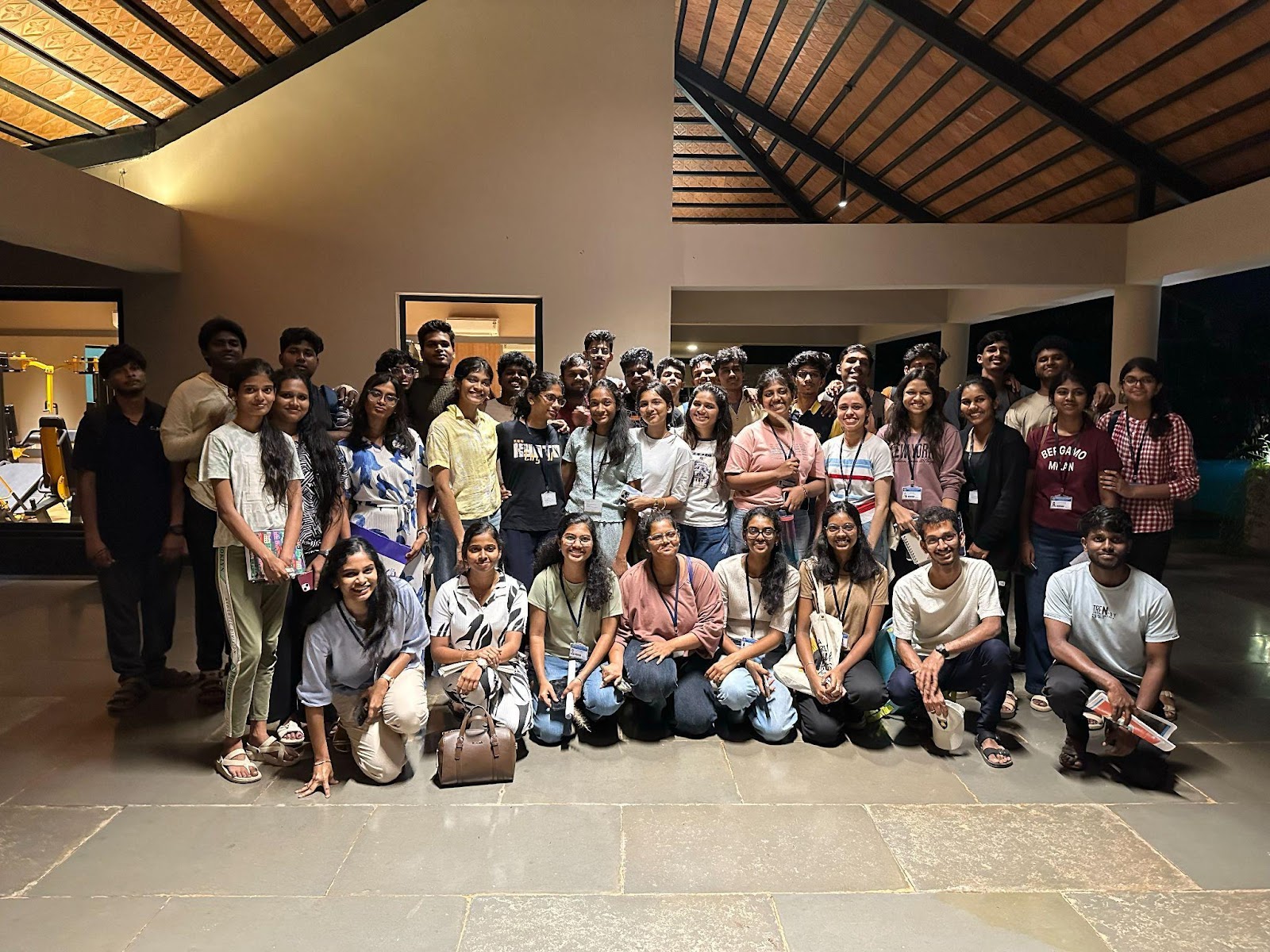
For these future architects, Organo Antharam provided a living example of how thoughtful design can create communities that nurture both people and the planet. In a world where sustainable development often feels abstract, they experienced it as a tangible, livable reality.
Organo Et School empowers people to embrace eco-living mindsets, behaviors, and habits. We recognize that for any positive impact to be sustainable, it must be long-term and inter-generational.
Organo Et School is a learning initiative set up by Organo in 2017 and has been facilitating field visits and workshops for Schools and Interest Groups. Organo Et School, an experiential learning initiative by Organo since 2017, has impacted over 8000 students, 2000 adults,1250 community residents, and 500 corporate employees.
Join us on our journey toward sustainable living by subscribing to our channel and following us on Instagram for the latest updates.
Email us at at oes@organo.co.in or call us at 91541 00775
Subscribe to our Youtube channel: https://www.youtube.com/channel/UCVe5InTKtgyGsGgNVNZ5sOw
Follow OES news on our Website: https://www.organoetschool.co.in
Follow OES on Instagram: https://www.instagram.com/organo_et_school/?hl=en